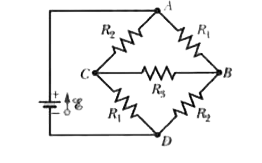q=−w=nRT1n(vf−vi) is for isothermal ………change.Solution in Telugu
Reversible.
Topper's Solved these Questions
- BOOK - VGS PUBLICATION-BRILLIANTCHAPTER - THERMODYNAMICSEXERCISE - SHORT ANSWER QUESTIONS62videos
THERMODYNAMICS
- BOOK - VGS PUBLICATION-BRILLIANTCHAPTER - THERMODYNAMICSEXERCISE - LONG ANSWER QUESTIONS4videos
THERMODYNAMICS
- BOOK - VGS PUBLICATION-BRILLIANTCHAPTER - THE s-BLOCK ELEMENTS EXERCISE - Long Answer Question (8 Marks)25videos
THE s-BLOCK ELEMENTS
- BOOK - VGS PUBLICATION-BRILLIANTCHAPTER - TS MARCH -2018EXERCISE - SECTION -C3videos
TS MARCH -2018
Similar Questions
What are open, closed and isolated systems ? Give one example for each.
02:52View SolutionState and explain the Hess's law of constant heat summation.
11:33View SolutionJustify the inclusion of alkali metals in the same group of the periodic table with reference to the following.
(i) Electronic configuration.View SolutionWhat are the postulates of Bohr's model of hydrogen atom?
02:21View SolutionAn ideal gas expands isothermally from volume V1 to V2 and is then compressed to original volume V1 adiabatically. Initialy pressure is P1 and final pressure is P3. The total work done is W. Then
View SolutionAn ideal gas at initial pressur eP1 and volume V1 undergoes reversible expansion to the same volume Vf either isothermally or adiabatically . Consider the following statements :
1. ∣∣Pf( adiabatic )<Pf( isothermal )∣ 2. ∣W( adiabatic )|<|W( isothermal )∣
3. ∣∣Tf( adiabatic )<Tf( isothermal )∣ 4. ∣q( adiabatic )|<|q( isothermal )∣
where the symbols have their usual meaning.
How many statements of the above are correct?01:35View Solution
Observers O1andO2 are at rest and the wall is moving with velocity V_(w) Cart is moving with constant velocity V_(s) towards wall. The source of sound is in the cart, the original frequency of the wave is f. sound has velocity C w.r.t. ground (medium is stationary) Then match the column -I with column-II
Column-IColumn-II(A)Wavelength received byO1directly from cart(P)(C−VwC+Vw)(C−Vs)f(B)Wavelength received byO2directly from cart(Q)C+Vsf(C)Wavelength received by driver of the cartafter reflection from wall(R)(C+VwC−Vw)(C−Vs)f(D)Wavelength received byreflection from wallO1after(S)C−Vsf(T)None of these06:14View SolutionEntrolpy change in isothermal expansion work of one mole of an ideal gas from volume V1 and V2 is given by
02:50View SolutionMatch Column - I with Column-II:
Column-I(Ideal Gas)Column-II(Related equation)(A)Reversible isothermal process(P)W = 2.303nRT log(P2/P1)(B)Reversible adiabatic process (Q)W=nCVm(T2−T1)(C)Irreversible adiabatic process(R)W = -2.303nRT log(V2/V1)(D)Irreversible isothermal process (S)W=−∫VfViPext.dV03:24View SolutionFor a reversible process at T = 300K, the volume is increased from V_(i)=1L to V_(f)=10L . Calculate Delta H if the process is isothermal -
View SolutionIf the boundary of system moves by an infinitesimal amount, the work involved is given by dw=−PextdV
for irreversible process w=−PextΔV (where ΔV=Vf−Vi)
for reversible process Pext=Pint±dP≅Pint
so for reversible isothermal process w=−nRTln.VfVi
2mole of an ideal gas undergoes isothermal compression along three different plaths :
(i) reversible compression from Pi=2 bar and Vi=8L to Pf=20 bar
(ii) a single stage compression against a constant external pressure of 20 bar, and
(iii) a two stage compression consisting initially of compression against a constant external pressure of 10 bar until Pgas=Pext, followed by compression against a constant pressure of 20 bar until Pgas=Pext
Work done on the gas in single stage compression is :08:50View SolutionThe volume of a certain amount of gas changes isothermally from V_(1) "to" V_(2) . What will be the work done?
05:02View SolutionEntropy change for an isothermal expansion of one mole of an ideal gas from volume V_(1) to V_(2) is :
07:39View SolutionIn Fig 27-50,ε=24.0V,R1=2000Ω,R2=3000ΩandR3=4000Ω. What are the potential differences (a) VA−VB (b) VB−VC (c) VC−VDand(d)VA−VC?
 02:00View Solution
02:00View SolutionAn ideal gas expands isothermally from volume V_(1) to V_(2) and is then compressed to original volume V_(1) adiabatically. Initialy pressure is P_(1) and final pressure is P_(3) . The total work done is W . Then
01:08View Solution

